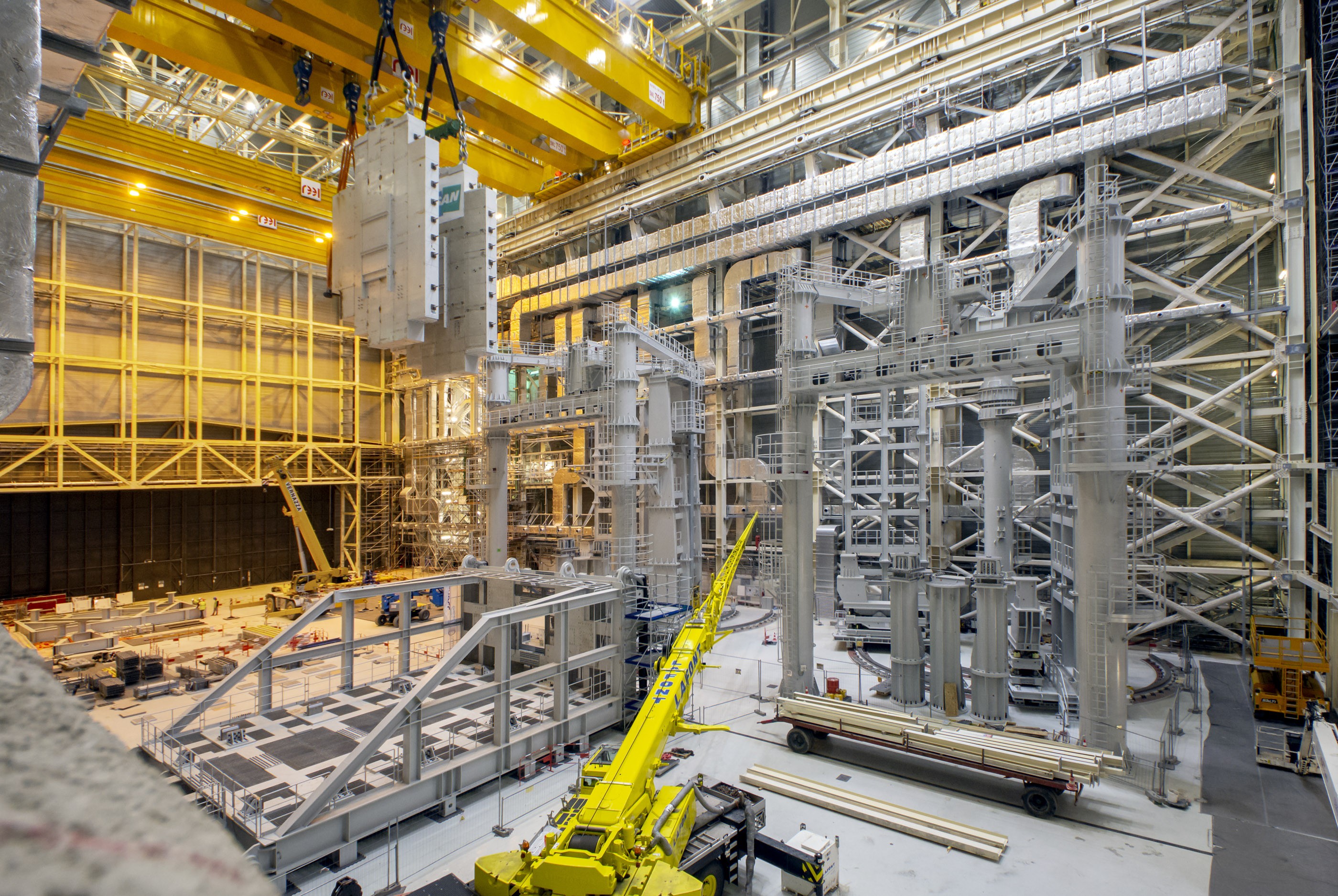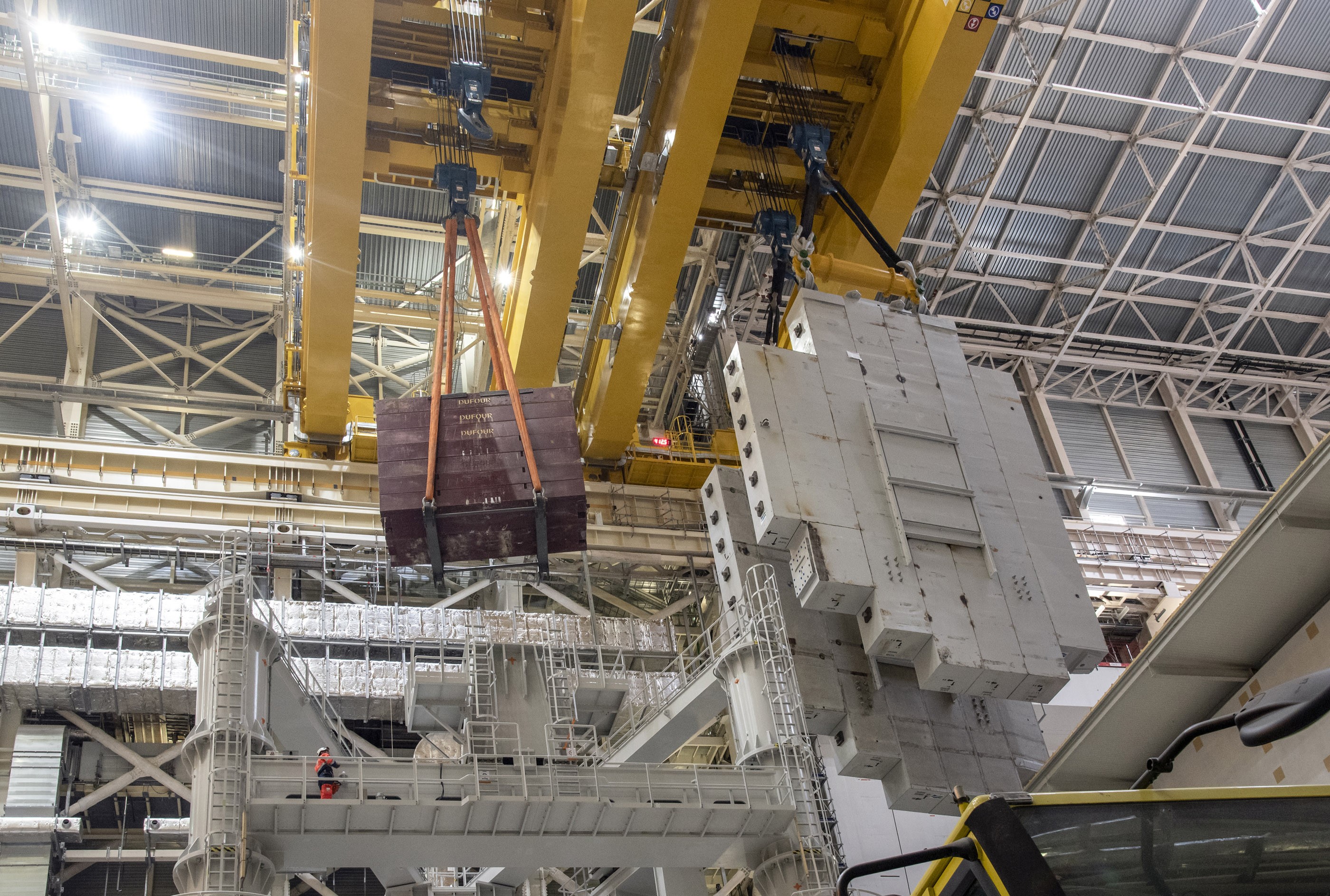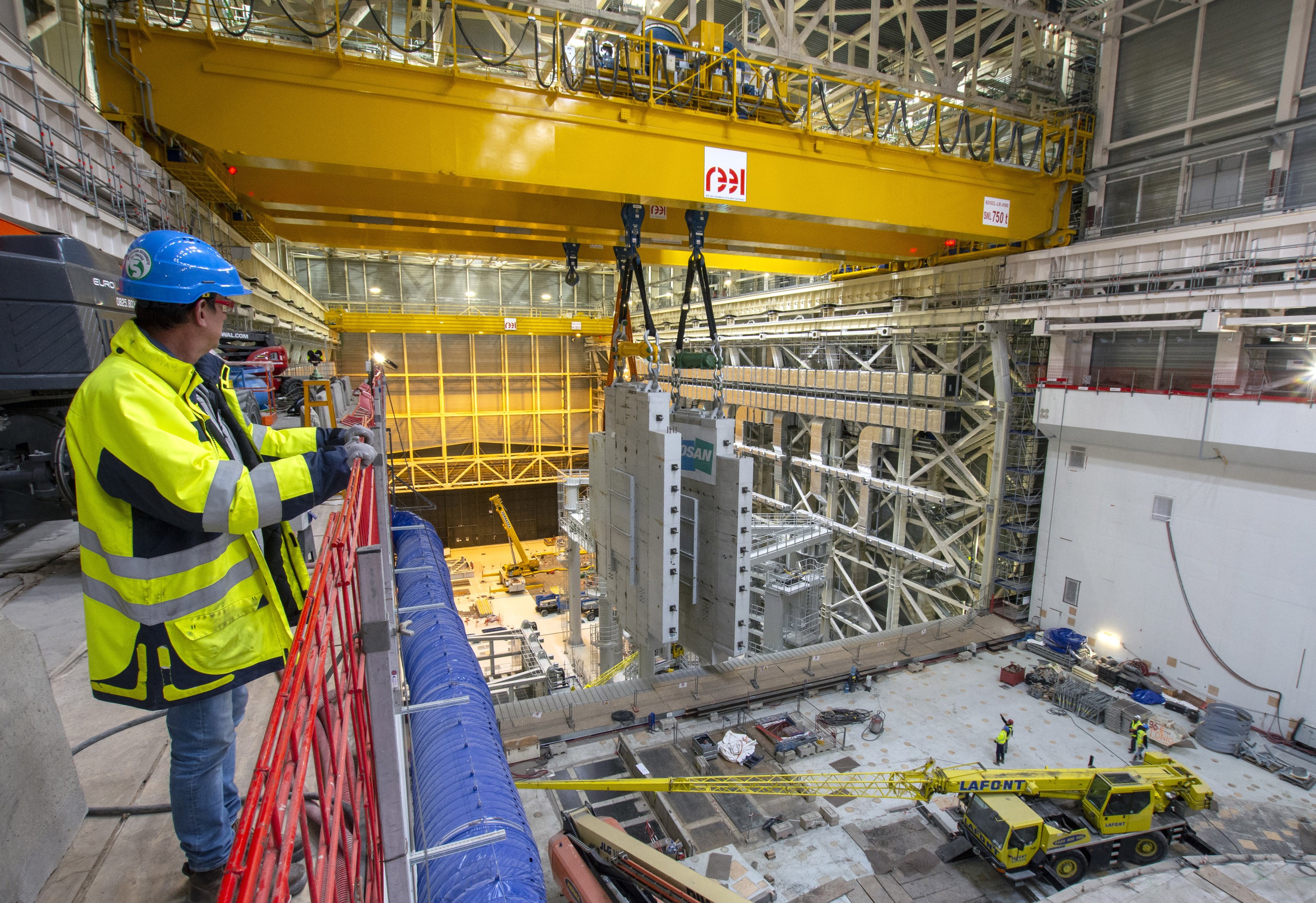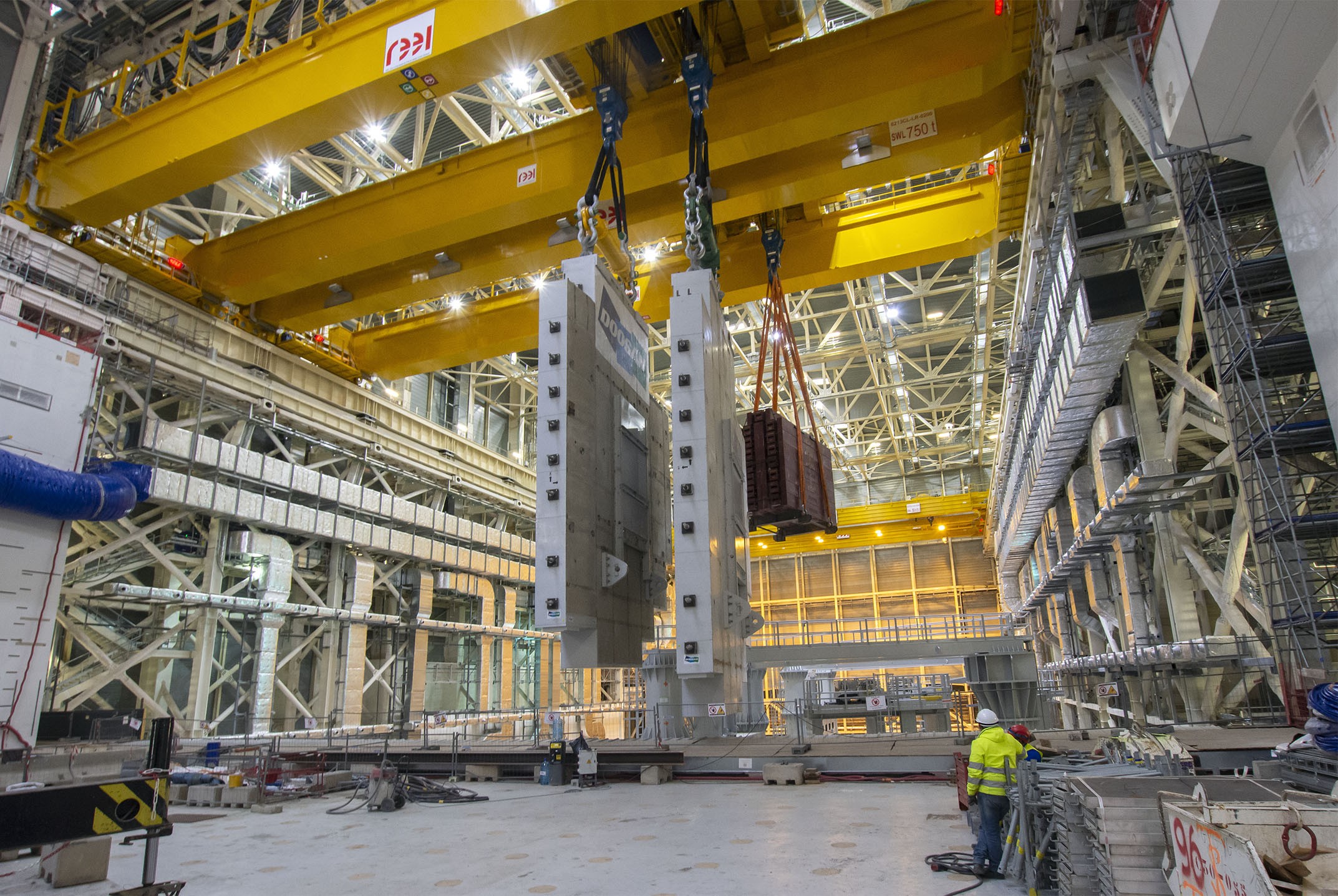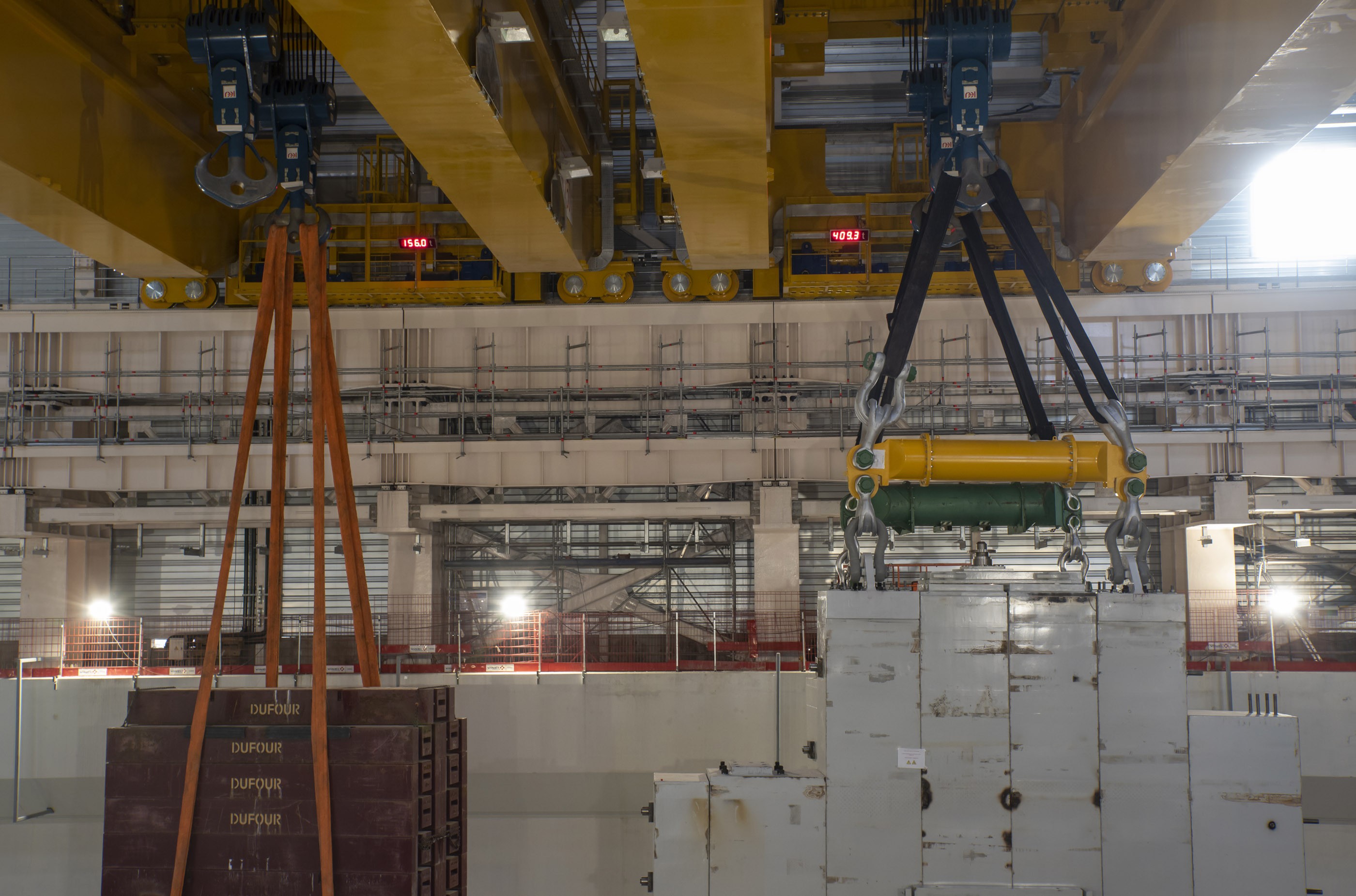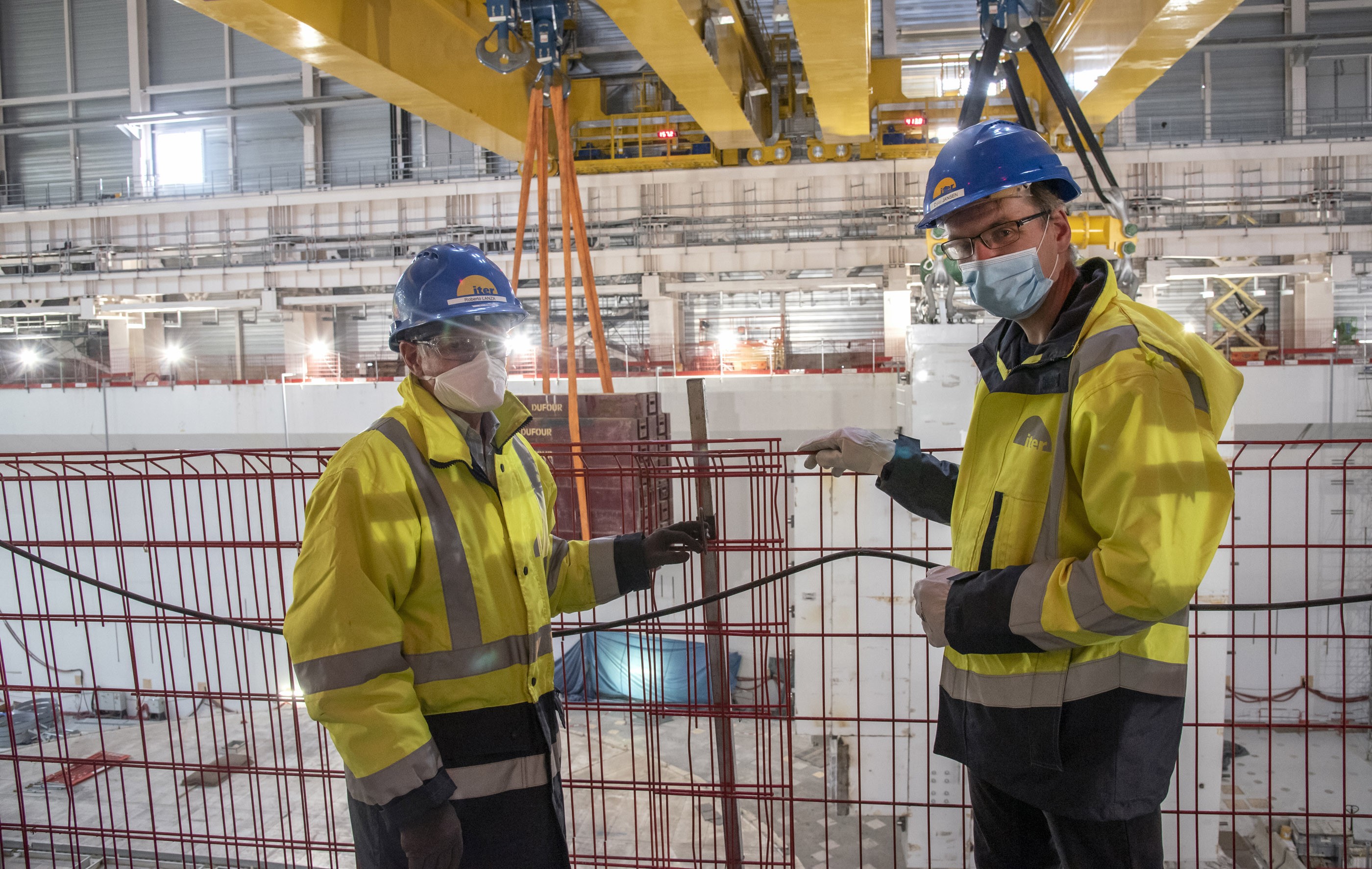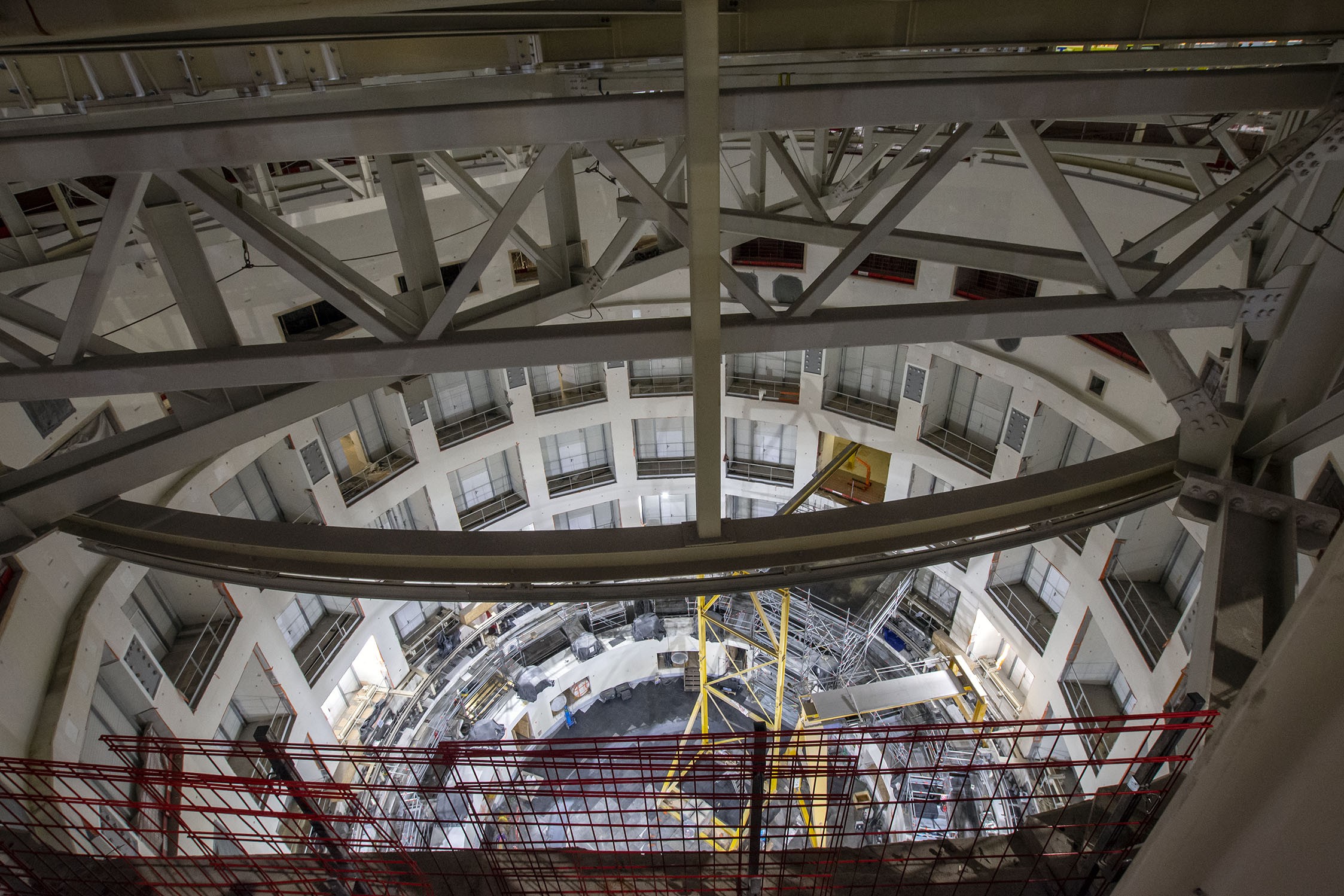The way to assembly is open
Passing an ITER Council milestone is always an achievement. Passing this milestone at this moment is much more than that: it is a demonstration that, despite the constraints imposed by the public health context, the ITER Organization, the European Domestic Agency and their contractors are determined to keep moving forward and to remain on schedule.
ITER Council milestone #50, which was successfully achieved two days ahead of schedule late on 28 March, is of considerable significance for the project, as it opens the way for the launch of the machine assembly phase.
Initiated at 8:00 a.m., the operation lasted well into the night and was only considered completed when the crane and its loads had returned to the Assembly Hall and were secured. By then Saturday had turned into Sunday, but 31 March—the official target for ITER Council milestone #50*—was still 48 hours away.




